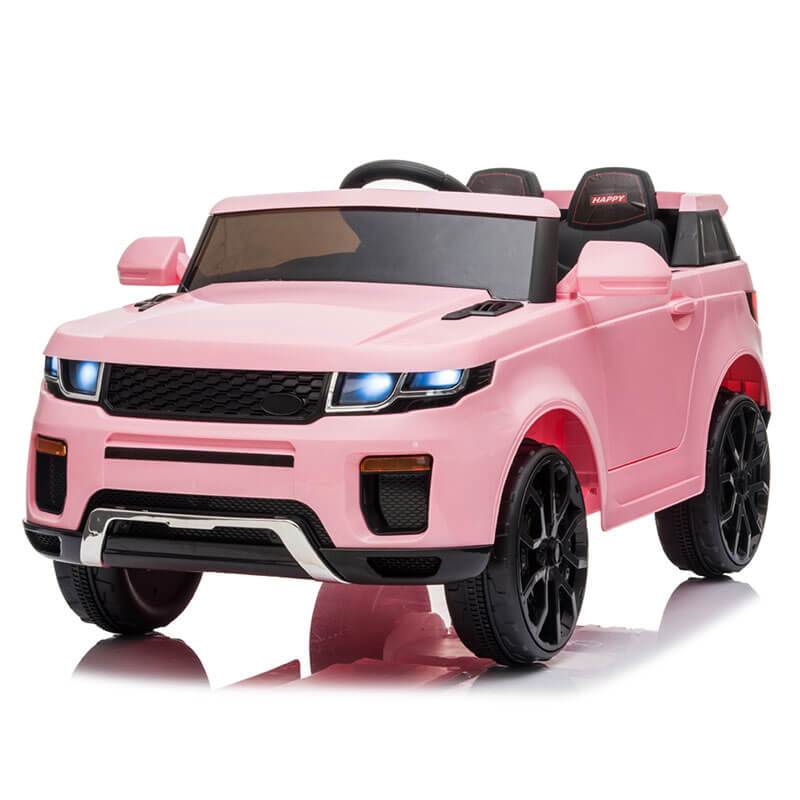This is the blog post for you if you’re new to kids’ electric cars and want to know which electric vehicle is best for your child.
We’ll go through the many choices available for various age groups, what features and capabilities to anticipate, and how to choose the appropriate automobile for your kid.
In This Article
What Do You Need to Know as a Parent?
Matching the vehicle to your kid’s interests and skills is the key to selecting the right electric car for your youngster.
What kind of appearance do they desire? Is it a sedan duplicate of their favorite full-size automobile or a recreation of their favorite cartoon car?
The car’s power capabilities are just as important as its appearance. If you give your kid too powerful cars, they may get anxious instead of excited, and if you give them too little power, they may become bored.
What about characteristics? Do you need a parental remote to regain control?
This guide will walk you through the many choices available and provide you with all of the information you need to make an educated decision. Have fun on the road!
1-2 years old
Because baby’s motor skills are still developing, they are susceptible to falls. With this in mind, purchasing a small electric vehicle built especially for this age group is a smart option.
Electric vehicles for one to two-year-olds are equipped with various unique characteristics, such as extra-supportive seats to prevent tipping. The motors in these vehicles are typically extremely low-powered, with maximum speeds of about 2mph.
Unlike vehicles for older children with pedals and various speed settings, cars for this age range typically use a one-touch button control mechanism. They often come with a remote that allows the parent to manage mobility, either assuming complete control or interfering as needed to prevent accidents and bumps.
Electric vehicles for 1- and 2-year-olds are often intended for indoor usage, especially on carpet. This is to reduce the risk of harm in the event of a fall.
Check the specifications of your selected vehicle to ensure that your kid is not driving it on an inappropriate surface. If you’re concerned that your child’s electric vehicle may vanish beyond the horizon, you might want to choose a model that is limited to a track. These may take the shape of trains, trucks, or automobiles and are a safe and secure method to introduce children to powered transportation.
3-5 years old
Most children have acquired the motor skills and reflexes required to handle a more powerful vehicle by the age of three. The electric vehicles intended for this age group have more powerful motors and reach speeds of up to six miles per hour.
Cars for children aged 3 and above are likewise more car-like, with detailed bodywork. There are also licensed automobiles with the likenesses of vehicles from children’s films and television, such as Lightning McQueen from the Cars series.
These vehicles can handle outside environments, enabling your kid to drive on grass, dirt, sand, and even mud in the case of more durable models. Be careful to read the car’s specifications to see how well it handles the ground in your backyard.
These electric cars often have extra features such as FM radios, realistic engine noises, and foot-pedal control to better mimic the feeling of driving a real car. Kids love cars with passenger seats because they can take their friends or siblings for a ride. Parental remote controls are still accessible, allowing you to monitor and manage your children when necessary.
The child’s skills determine the best vehicle power level for this age group. While most 3- and 4-year-olds will be OK with 6 volts, some older or more adventurous children with better coordination may be able to handle a 12 or even a 24-volt machine.
To give you an idea of the speed differential between the various voltages, a 6-volt vehicle can rarely go faster than 2 mph, whereas 12-volt autos can go up to 3.5 mph.
Many 24 volt vehicles can reach speeds of up to 6 mph. For this age group, there are various electric vehicles to select from.
So, make sure you choose the one that best fits your child’s skills and excitement.
5-8 years old
At the age of five, children will be able to operate a much more sophisticated electric vehicle. Electric vehicles intended for children aged 5 and above resemble actual automobiles even more.
Licensed replicas of various famous cars, such as Jeeps, Lamborghinis, and Mercedes, are extremely popular among children of this age group and typically come with multiple features intended to mimic real-world driving.
24 volts of power is suggested for this age group. 24-volt ride-on toys will travel faster and typically have more torque (power) than 12-volt models. Cars intended for this age group may be used outdoors on a range of soils, and many have two motors and numerous speeds, including reverse.
Although parental remote controls are accessible in many automobiles intended for this age group, this function is not available in other more sophisticated models.
With their excellent reflexes and coordination, this age group would benefit from a vehicle with a twin motor system. It allows for more gears and greater power, resulting in a more realistic and lifelike driving experience.
8+ years old
Here, your kid is eagerly anticipating a larger, more realistic, more powerful electric ride-on vehicle. You may go all out on those beautiful 4x4s, SUVs, and even quads if you have a kid aged 8 and above!
Electric ride-on vehicles intended for this age group are often more detailed and realistic-looking, with most models resembling miniature versions of the real thing!
They’re also more powerful and can drive on various surfaces, such as grassy plots, highways, and pavements. We suggest a robust 24-volt battery car with twin motors and different gear choices for kids aged 8 and above.
Make sure the vehicle you choose has appropriate rubber tires with enough traction. If your child is friendly and likes playing with other kids, a 2-seater model with adequate space for two small passengers may be a good choice!











